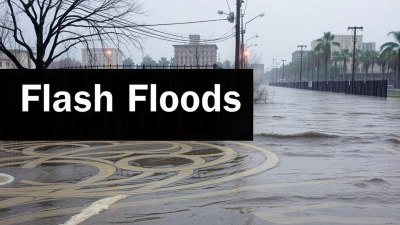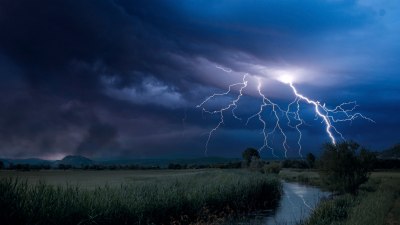How Atmospheric Rivers Transport Massive Amounts of Water
Explore how atmospheric rivers move vast water volumes through the atmosphere and impact global weather patterns.

Atmospheric rivers (ARs) are narrow corridors of concentrated moisture in the atmosphere that transport vast amounts of water vapor from tropical and subtropical regions toward the poles. These systems play a critical role in the Earth's hydrological cycle, delivering beneficial rainfall to dry regions but also posing significant risks of extreme weather and flooding events.
Understanding how atmospheric rivers function is essential for anticipating their impacts on weather, water resources, and ecosystems. This article delves into the formation, structure, and movement of atmospheric rivers, examining the mechanisms by which they carry enormous volumes of water vapor across the globe’s mid-latitudes.
The Concept of Atmospheric Rivers
Originally identified through satellite observations, atmospheric rivers appear as elongated plumes of enhanced water vapor in the lower atmosphere, often stretching thousands of kilometers across oceans. Despite their narrow width, typically 400 to 600 kilometers, they can transport an amount of water vapor equivalent to the average flow at the mouth of the Mississippi River—approximately 7.5 to 15 times the volume of the Amazon River's discharge.
These atmospheric water highways act as conduits that connect moist tropical air masses with mid-latitude regions, bringing moisture inland where it frequently condenses to produce significant precipitation. The term 'river' aptly captures their similarity to terrestrial rivers, but atmospheric rivers operate in the gaseous phase, moving moisture through the atmosphere instead of water through surface channels.
Formation of Atmospheric Rivers
The genesis of atmospheric rivers involves interactions between large-scale atmospheric circulation patterns and smaller mesoscale features. Warm tropical air picks up moisture over the oceans through evaporation processes. This moist air is then guided poleward by prevailing winds and upper-level jet streams, while topography and temperature gradients sharpen the moisture concentration into narrow bands.
Key drivers include the Hadley cell circulation, which transports hot, humid air away from the equator, and the mid-latitude westerlies, which channel air masses toward higher latitudes. Along their path, atmospheric rivers often encounter low-pressure systems or frontal boundaries that further enhance uplift and condensation of moisture.
The structure of an atmospheric river is characterized by a distinct moisture plume, bounded by drier air masses on either side. Their vertical extent stretches from near the surface to altitudes of around 2 to 3 kilometers, with the highest moisture concentrations usually below 2 kilometers altitude. This lower-tropospheric moisture concentration is a defining feature of ARs and distinguishes them from other large-scale moisture plumes.
Transport Mechanisms and Dynamics
Atmospheric rivers rely on prevailing winds, especially the strong low-level jets, to maintain their narrow, elongated shape and move vast amounts of water vapor across continents. These jets are narrow ribbons of winds with speeds often exceeding 20-30 meters per second. They act like conveyor belts, directing moisture efficiently from oceanic sources into land regions.
Moisture transport in ARs can reach values of 15-75 kilograms per meter per second, orders of magnitude greater than typical moist airflows. This intense moisture flux explains why these systems are the primary contributors to heavy precipitation during many storm events, especially on western continental margins like the U.S. West Coast.
Dynamic interactions with terrain features such as mountain ranges amplify the precipitation generated by atmospheric rivers. When moist air approaches mountains, it is forced upward, cooling adiabatically, leading to condensation and rainfall or snowfall. This orographic lift often results in significant surface water accumulation, reshaping both ecosystems and human infrastructure.
Global Patterns and Regional Variations
Atmospheric rivers are a global phenomenon, observed on every ocean basin and impacting many coastal and inland regions. While their core dynamics remain similar worldwide, regional differences in climate and geography influence their behavior and effects.
For example, the western coasts of North America and Europe often experience intense AR events during their respective wet seasons. The Pacific Ocean is home to some of the most studied atmospheric rivers, frequently causing major flooding in California and British Columbia. Similarly, the western Mediterranean region experiences ARs that are critical for its water supply but also linked to flash floods.
Over Asia, atmospheric rivers contribute moisture to the Himalayas and southern China, affecting the monsoonal rainfall patterns essential for agriculture. In the Southern Hemisphere, ARs impact parts of Australia and New Zealand, shaping precipitation and drought cycles. Though less studied, their role in Southern Ocean ecosystems and polar regions is an emerging field of interest, particularly considering climate change impacts.
Impact on Weather and Water Resources
Atmospheric rivers are double-edged swords for societies and ecosystems. On the beneficial side, they replenish reservoirs, sustain river flows during dry periods, and support agriculture and forests. Significant portions of annual precipitation in key regions result directly from AR events.
However, the sheer volume of moisture transported means atmospheric rivers can also produce devastating floods and landslides. When a strong AR stalls or repeatedly strikes the same area, the excess precipitation overwhelms natural and man-made drainage systems, leading to widespread damage and disruptions.
Flood risks associated with ARs have increased in some regions due to urban expansion and deforestation. Infrastructure is often unprepared for such intense water inputs, creating challenges for emergency management and long-term planning. Moreover, rainfall from atmospheric rivers is highly variable, complicating forecasts and water resource management.
Interaction with Climate Change
Climate change is altering atmospheric river behavior through several mechanisms. Warmer air holds more moisture, following the Clausius-Clapeyron relationship, leading to potential increases in AR intensity. Observational studies have noted trends toward stronger and wetter atmospheric rivers over recent decades.
Climate models predict that while the total number of ARs may decrease, their average strength and moisture transport capacity will increase. This intensification implies more extreme precipitation events in affected regions, raising concerns about flooding and water management.
Rising sea surface temperatures and altered atmospheric circulation patterns may also shift the typical trajectories and landfall locations of atmospheric rivers. Such shifts could impact water availability in traditionally dependent regions while exposing new areas to AR-driven weather risks.
Addressing these challenges requires integrating atmospheric river dynamics into climate adaptation strategies. Improved monitoring, forecast models, and infrastructure resilience plans are critical to cope with changing atmospheric water flow.
Detection and Forecasting Technologies
Detecting atmospheric rivers relies heavily on satellite remote sensing and advanced numerical weather prediction models. Instruments such as microwave imagers and infrared sensors aboard satellites measure column-integrated water vapor, revealing AR plumes in near real-time.
Ground-based observations including radiosondes, weather radar, and surface stations provide complementary data on atmospheric moisture, wind, and precipitation during AR events. Together, these tools enable meteorologists to track the formation, evolution, and movement of atmospheric rivers.
In recent years, forecasting models have improved significantly, allowing for better prediction of AR landfalls and precipitation amounts several days in advance. Specialized atmospheric river indices quantify the strength, size, and duration of these features, assisting in risk assessment and resource planning.
Early warning systems based on AR forecasts have been adopted in regions like California, reducing disaster impacts through timely alerts and preparation. Continued advancements in climate modeling and machine learning hold promise for enhancing the accuracy and lead time of atmospheric river forecasts worldwide.
Conclusion: Atmospheric Rivers as Vital Water Conveyors
Atmospheric rivers are extraordinary natural phenomena that transport immense quantities of water vapor through the atmosphere, connecting distant oceanic moisture sources to terrestrial landscapes. Their focused moisture plumes drive critical precipitation events that shape regional climates, ecosystems, and human societies.
While offering essential hydrological benefits, atmospheric rivers also pose significant risks due to their potential for extreme weather and flooding. Understanding their formation, dynamics, and impacts is fundamental for improving weather predictions and water management, especially in a changing global climate.
Ongoing research aims to unravel further complexities of atmospheric rivers, including their interactions with climate variability and human activities. Integrating this knowledge into operational forecasting and infrastructure planning will be key to balancing the opportunities and challenges presented by these remarkable atmospheric water conveyors.
As the world faces increasing hydrological extremes, atmospheric rivers will remain a focal point for science, policy, and community resilience strategies.











